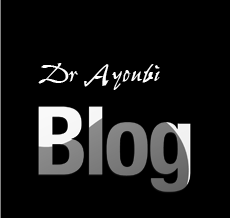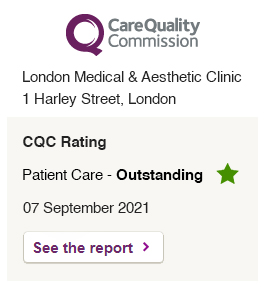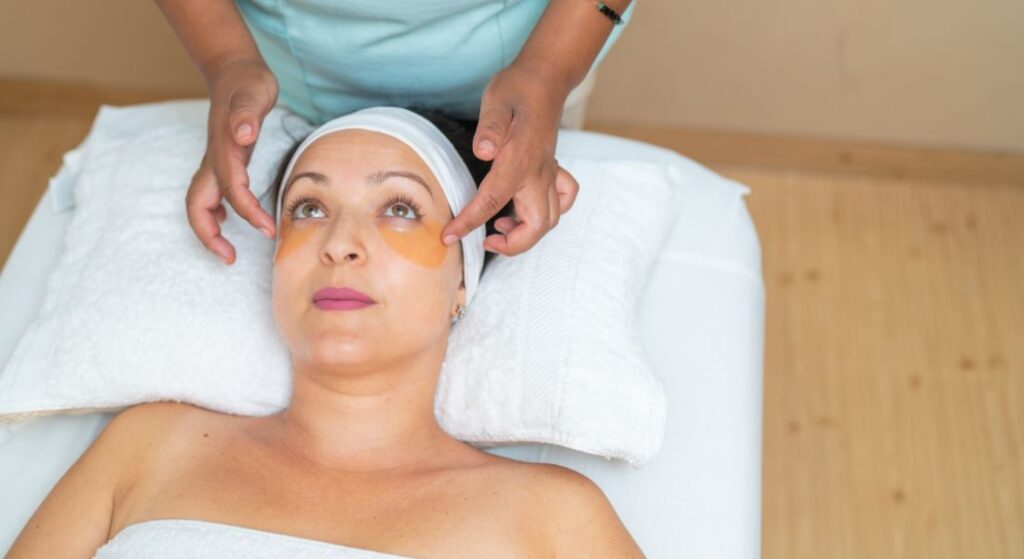
If you’re considering CO2 laser resurfacing for your under-eye area, you’ve probably heard about its impressive results smoother texture, fewer wrinkles, and a brighter, more youthful look. But before you commit, it’s essential to understand what the healing process involves and how long you’ll need to recover.
Because the under-eye skin is thinner and more delicate than the rest of your face, the downtime after treatment can vary. The good news is that recovery is manageable with the right aftercare, and the results are well worth the wait.
In this guide, I’ll walk you through what happens after CO2 laser treatment under the eyes, the stages of healing, what to expect each day, and how to recover more quickly and comfortably.
Why Downtime Matters
CO2 laser resurfacing is one of the most effective ways to rejuvenate your skin, but it’s important to understand that it’s a process and like any process, it takes time. The treatment works by carefully removing the outer layers of damaged skin while stimulating collagen production deep underneath.
During this healing period, you may notice redness, swelling, peeling, or sensitivity. That can feel inconvenient, especially if you’re used to your skin looking and feeling perfect every day. But these changes aren’t a problem they’re your body’s natural response to healing, showing that your skin is actively repairing itself and making way for fresh, healthy layers.
Knowing what to expect also allows you to plan your schedule wisely. You might need to take a few days off work, avoid social events, or adjust your skincare routine. By doing this, you’re giving your skin exactly what it needs to recover fully and reveal the best results.
Instead of seeing downtime as a setback, embrace it as part of the journey. Give yourself permission to rest, hydrate, and pamper your skin. Celebrate the little milestones in your healing process, remembering that each day brings your skin closer to a refreshed, rejuvenated version of you.
How CO2 Laser Works Under the Eyes
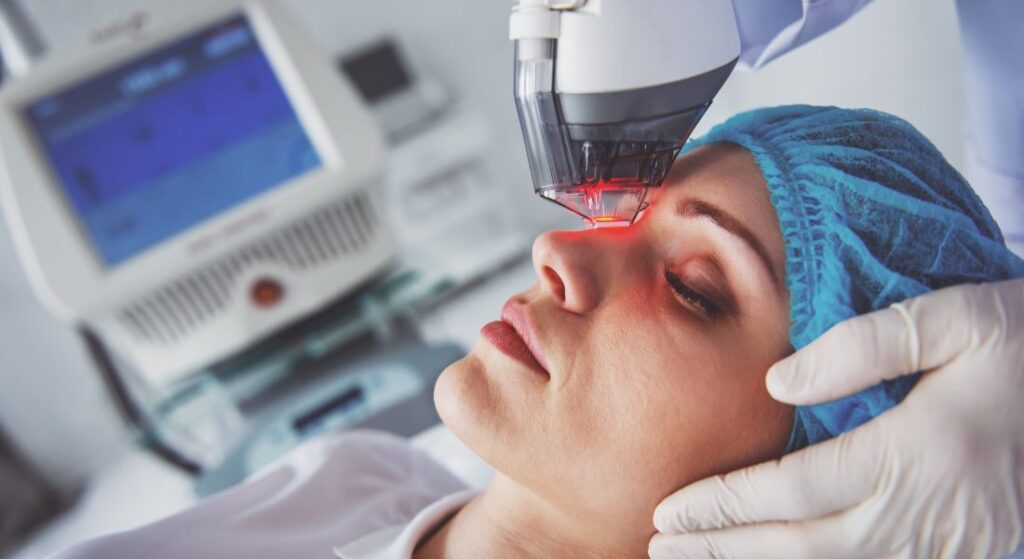
A CO2 laser uses carbon dioxide energy to precisely target the under-eye area, removing old, damaged skin and promoting collagen and elastin growth. The laser can:
– Minimise fine lines and crow’s feet.
– Tighten loose, crepey under-eye skin.
– Reduce pigmentation and sun damage.
– Improve texture and tone.
Because the under-eye area is more delicate, the settings used are lower and more focused than for full-face treatments. This ensures effective results while keeping recovery as gentle as possible.
What Happens Immediately After Treatment
Right after the procedure, it’s normal for your under-eye skin to look red, swollen, and slightly shiny. You may also feel mild warmth or tightness in the treated area similar to a sunburn.
This early phase is crucial. Your provider will likely apply a healing ointment and give you detailed aftercare instructions. Avoid touching or rubbing the area, and rest as much as possible for the first 24 hours.
Most clinics performing CO2 laser treatment in London also provide follow-up checks to monitor healing and adjust your care routine if needed. These appointments help ensure that your skin is recovering as expected and allow your provider to make any small tweaks to your aftercare plan to optimize results.
In the days following treatment, you may notice peeling, flaking, or mild dryness as your skin naturally sheds damaged cells and renews itself. This is completely normal and is actually a sign that the laser is stimulating new, healthy skin growth. By following your aftercare instructions carefully, you can make this process smoother and more comfortable.
It’s also important to protect your under-eye area from direct sunlight and avoid harsh skincare products during the recovery period. Staying hydrated, using gentle moisturizers, and applying sunscreen when needed will help your skin heal faster and maintain the long-lasting, rejuvenated results you’re aiming for.
The Stages of Healing: Day-by-Day Timeline
Everyone heals at their own pace, but here’s a general overview of what you can expect after under-eye CO2 laser treatment:
Days 1–3: Redness, Swelling, and Tightness
During the first few days after CO2 laser treatment, your under-eye skin will likely feel tight and look noticeably red. Mild swelling is completely normal, and you might notice some clear fluid or light crusting as your skin begins its natural healing process. This is your body’s way of repairing itself and laying the foundation for smoother, healthier skin.
To manage this phase and stay comfortable:
– Apply the prescribed healing ointment regularly to keep the area moist and protected.
– Keep your head elevated while sleeping to help reduce swelling.
– Avoid washing your face with hot water, which can irritate the delicate skin.
– Try to plan a few quiet days at home to let your skin rest and recover without added stress.
You may also notice some mild itching or tingling this is normal and a sign that your skin is actively repairing itself. Resist the urge to scratch or pick at any crusting, as this can slow healing and affect your results. During these first few days, gentle care, patience, and following your provider’s instructions are key to ensuring the best outcome.
Days 4–7: Peeling and Flaking Begin
Around day four, you’ll likely notice your under-eye skin starting to peel and shed dead cells. This is a completely normal part of the healing process and a clear sign that new, fresh skin is beginning to emerge underneath. While it might look a little uneven or flaky, try to remember that this stage is a positive step toward smoother, rejuvenated skin.
It’s very important not to pick or peel the skin manually, even if it feels tempting. Doing so can cause scarring, dark spots, or uneven pigmentation, which may affect your final results. Instead, let the peeling happen naturally and gently.
During this phase, keep your skin well-hydrated using a gentle, fragrance-free moisturizer to soothe tightness and reduce discomfort. If you need to go outside, make sure you continue to use sun protection, as your new skin is especially sensitive to UV rays and can burn or darken easily. Small, careful steps now will help ensure your under-eye area heals beautifully and maintains the long-lasting results of your CO2 laser treatment.
Week 2: Pink, Fresh Skin Appears
By the second week, the peeling should be complete, leaving soft pink skin underneath. Redness may still be visible but will gradually fade over the coming weeks.
At this point, most people feel comfortable returning to work and light social activities. You can usually wear mineral-based makeup once your specialist gives approval.
Weeks 3–4: Redness Fades and Results Emerge
By the third and fourth week, the redness will continue to fade, and you’ll start noticing improvements in your skin’s texture and tone. Fine lines will appear softer, and your under-eye area will look smoother and brighter.
Collagen production remains active during this period, which means your results will continue improving for several months.
1–3 Months: Skin Strengthens and Results Settle
While your skin may appear mostly healed within a month, deeper healing continues for several weeks, so results will keep improving over time. During this time, the collagen and elastin fibres strengthen, firming and tightening your under-eye area further.
You’ll see your best results around 3–6 months after treatment smoother, firmer, and more youthful-looking skin.
How Long Is the Downtime Really?
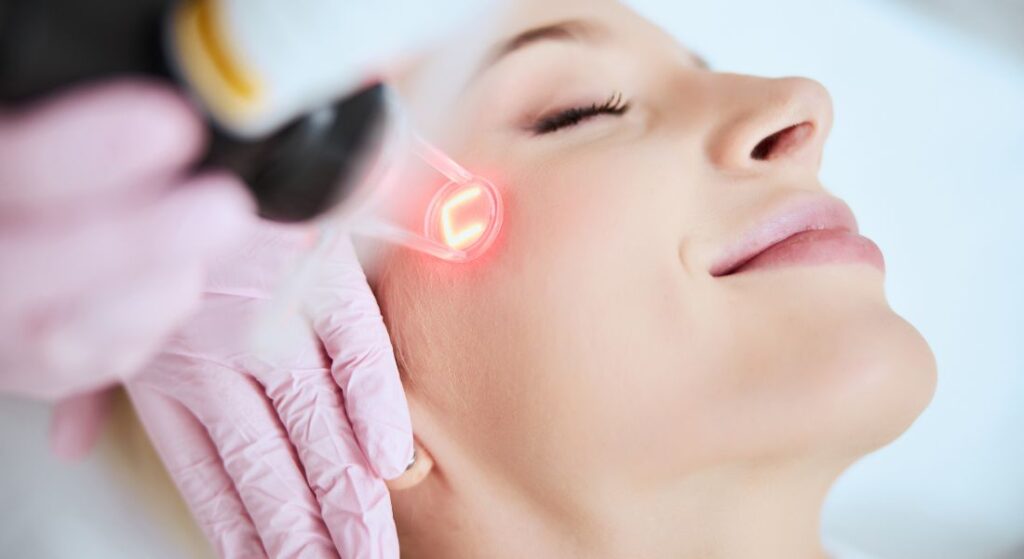
Downtime typically lasts about a week, though everyone heals at a slightly different pace. The intensity of the treatment and your skin’s unique response can influence recovery time.
However, mild redness may linger for several weeks similar to a light flush. Makeup can usually be worn to cover this once the peeling has stopped.
If you undergo a lighter fractional CO2 laser session, downtime may be as short as 4–5 days. More intensive resurfacing treatments may take up to two full weeks.
Factors That Affect Healing Time
The exact speed of your recovery can vary from person to person, and several factors play a role in how quickly your skin bounces back after CO2 laser treatment.
Treatment intensity: The deeper and more aggressive the resurfacing, the longer your downtime may be. Think of it as giving your skin a bigger “reset,” which naturally requires more healing time.
Age and skin type: Younger, healthy skin generally heals faster and more efficiently. If your skin is naturally dry or sensitive, it may take a bit longer to settle.
Pre-existing conditions: Health issues like diabetes, autoimmune disorders, or poor circulation can slow the healing process, so extra care is needed if any of these apply to you.
Lifestyle habits: Smoking, a poor diet, or inadequate sleep can all impact recovery. Your skin is actively rebuilding, and it needs nutrients, oxygen, and rest to do its best work.
Aftercare routine: Following your provider’s instructions carefully using healing ointments, protecting your skin from sun exposure, and avoiding irritants can make a huge difference in reducing downtime and preventing complications.
Ultimately, the better your overall health and skincare habits, the smoother and faster your recovery will be. Carefully following aftercare instructions, protecting your skin, and being patient will help your under-eye area heal smoothly and reveal long-lasting, radiant results.
How to Speed Up CO2 Laser Recovery
While you can’t completely eliminate downtime after CO2 laser treatment, there are several things you can do to help your skin heal faster and more comfortably. By giving your skin the right care, you can make the recovery process smoother and get to your best results sooner.
Follow Your Aftercare Plan Strictly
Stick to the products and routine recommended by your specialist. Avoid using over-the-counter creams, serums, or exfoliants that haven’t been approved for post-laser skin even if they promise fast results. Your skin is delicate right now, and using the wrong products can slow healing or cause irritation.
Keep Skin Moisturised
Hydration is key. Apply your healing ointment or a bland, gentle emollient as instructed. Well-moisturised skin prevents cracking, reduces discomfort, and helps your new skin emerge smoothly. Think of it as giving your skin a protective, nurturing layer while it rebuilds itself.
Avoid Sun Exposure
Freshly treated skin is extremely sensitive to UV rays. Stay indoors when possible, or shield your eyes with sunglasses and a wide-brimmed hat when you go outside. Once your provider says it’s safe, use a broad-spectrum SPF daily to protect your new skin and prevent pigmentation.
Eat a Skin-Healthy Diet
Your body needs the right nutrients to repair itself efficiently. Focus on foods rich in vitamin C, zinc, and protein, and drink plenty of water to stay hydrated. A nutrient-packed diet isn’t just good for overall health it directly supports collagen production and faster skin healing.
Get Enough Rest
Sleep is your body’s natural repair mode. Aim for at least 7–8 hours a night, and try to minimize stress wherever you can. The more rested you are, the more efficiently your skin can heal.
Avoid Makeup Until Fully Healed
Applying makeup too early can irritate your sensitive new skin or even introduce bacteria that cause infection. Wait until peeling is complete and your provider gives the go-ahead before using any cosmetic products.
Don’t Pick or Scratch
Even if your skin itches or flakes, resist the urge to touch it. Let it shed naturally to avoid scarring, dark spots, or uneven pigmentation. Think of it like giving your skin space to do its job a little patience now will pay off in long-term results.
By following these steps, you’re not just helping your skin recover you’re actively setting yourself up for smoother, healthier, and longer-lasting results. The more carefully you care for your skin during this period, the more radiant and refreshed it will look when fully healed.
Managing Redness and Swelling
Redness is a normal part of healing and usually fades on its own. If it persists, your doctor may recommend:
– Cooling compresses to reduce warmth.
– Soothing gels containing aloe vera.
– A light anti-inflammatory cream.
Swelling typically peaks within the first 48 hours, then subsides. Sleeping with your head elevated helps it resolve faster.
When to Seek Medical Advice
Contact your clinic immediately if you notice:
– Unusual pain or severe swelling.
– Yellow or green discharge.
– Increasing redness after the first week.
– Signs of infection or fever.
Prompt evaluation ensures any issue is addressed before it becomes serious.
When Will You See Results?
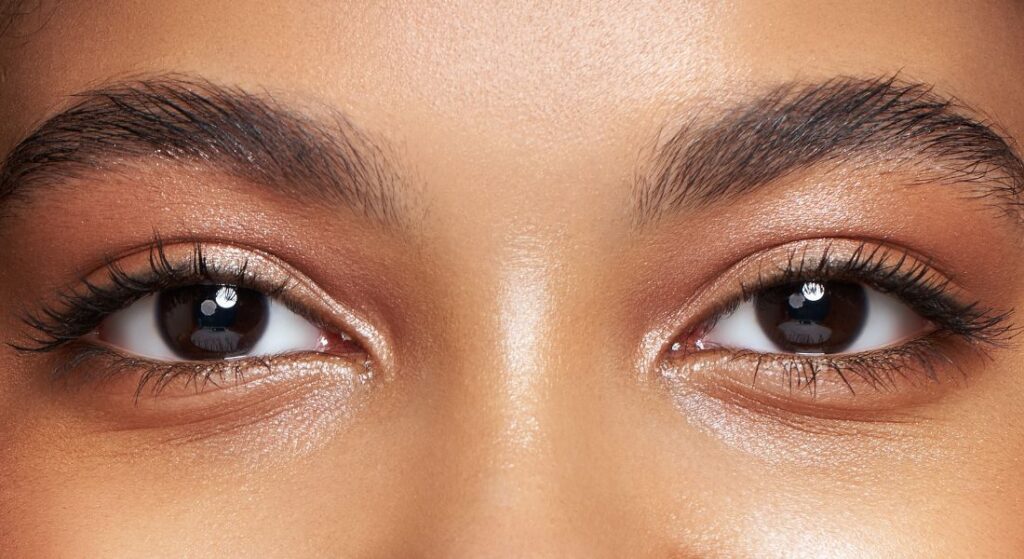
You may start to notice improvements as the redness gradually fades, often within two to three weeks, though timing varies from person to person.
However, the full benefits of the treatment appear over time. Collagen continues rebuilding for up to six months, meaning your under-eye area will keep improving long after your skin looks healed.
Most patients report smoother texture, tighter skin, and a more refreshed appearance that lasts for years.
Comparing Downtime: Under-Eye vs Full-Face
When it comes to downtime, treating only the under-eye area typically requires 7–10 days of recovery, with visible redness lasting 2–4 weeks, and results can last between 2–5 years. In comparison, full-face treatments usually involve a slightly longer downtime of 10–14 days, with redness persisting for 3–6 weeks, and results lasting 3–7 years. Overall, focusing solely on the under-eye area generally allows for faster healing while still providing transformative results.
Cost and Value
In the UK, under-eye CO2 laser resurfacing typically costs between £400 and £1,200, depending on the clinic and treatment intensity.
When performed correctly, results can last several years, making it a cost-effective alternative to repeated injections or temporary treatments.
If you’re considering professional CO2 laser treatment in London, ensure you choose a clinic experienced in precision eye-area resurfacing. The right expertise ensures both safety and the best possible outcome.
Long-Term Care After Healing
Once your under-eye skin has healed, you can maintain your results by:
– Using daily SPF (minimum SPF 30).
– Applying gentle eye creams with peptides or hyaluronic acid.
– Avoiding excessive sun exposure and smoking.
– Following up with your doctor annually for check-ups.
Some patients choose to repeat the treatment every few years to maintain their results long-term.
FAQs:
1. How long does it take to recover from under-eye CO2 laser resurfacing?
Recovery from under-eye CO2 laser treatment varies depending on the depth and intensity of the procedure, as well as individual healing factors. Most patients experience the most noticeable downtime for about 7 to 10 days, during which redness, mild swelling, and peeling are common. While visible signs of healing may diminish after this period, complete internal recovery, including collagen and elastin strengthening, can take up to three months. Lighter treatments often result in a shorter downtime, while more intensive sessions may extend healing to two weeks.
2. Will the procedure be painful?
The CO2 laser treatment itself is usually well-tolerated because a topical numbing cream or local anaesthetic is applied before the procedure. Immediately after the treatment, it is normal to feel mild warmth, tightness, or a sunburn-like sensation around the under-eye area. These sensations generally subside within a few days and can be managed with the prescribed healing ointments and careful aftercare. Most patients report that discomfort is manageable and temporary compared to the long-term benefits of smoother, rejuvenated skin.
3. When can I go back to work or social activities?
Many patients feel comfortable returning to work and light social engagements within one to two weeks, depending on how quickly their skin recovers. By the second week, peeling is typically complete, and redness begins to fade, allowing for the cautious use of mineral-based makeup if approved by your specialist. It is important to plan your schedule around the healing process, avoid strenuous activities that may irritate the skin, and protect your under-eye area from direct sunlight during the initial recovery period.
4. Can I wear makeup immediately after the treatment?
It is strongly advised to avoid makeup until your under-eye skin has fully healed and any peeling or flaking has stopped. Applying makeup too early can introduce bacteria, cause irritation, or disrupt the delicate healing process, potentially leading to scarring or uneven pigmentation. Once your specialist confirms it is safe, you can resume using gentle, mineral-based cosmetic products. Patience during this stage helps ensure optimal results and reduces the risk of complications.
5. How long do results last?
The effects of under-eye CO2 laser resurfacing are long-lasting, particularly when combined with proper long-term skincare. Most patients notice improvements in fine lines, skin texture, and pigmentation that can last for several years, typically between two and five years for targeted under-eye treatments. Full-face CO2 laser treatments may have slightly longer-lasting results due to more extensive collagen stimulation, but targeted treatments under the eyes provide a highly effective rejuvenation with faster recovery.
6. What factors affect the speed of healing?
Recovery time is influenced by several variables, including treatment intensity, age, skin type, and overall health. Younger patients with resilient skin generally heal faster, while those with sensitive or dry skin may experience a slightly longer recovery. Pre-existing health conditions, such as diabetes or poor circulation, can slow the healing process. Lifestyle choices, including smoking, diet, sleep quality, and adherence to aftercare instructions, also play a significant role in how quickly the under-eye area recovers.
7. Can CO2 laser treatment reduce dark circles?
CO2 laser resurfacing can help improve pigmentation under the eyes caused by sun damage or natural ageing. By promoting collagen and elastin production, it can tighten the skin, which in turn may reduce the shadowing effect that contributes to the appearance of dark circles. However, the treatment is not specifically designed to target blood vessels or hereditary pigmentation, so results may vary depending on the underlying cause. Your specialist can assess whether the treatment is suitable for addressing your specific concern.
8. What should I do if redness or swelling persists?
Mild redness and swelling are common during the first few days after treatment and generally subside naturally. If redness or discomfort persists beyond the expected timeline, your provider may recommend cooling compresses, soothing gels containing aloe vera, or light anti-inflammatory creams. Any sudden increase in pain, swelling, or discharge should be reported immediately, as these could indicate infection or other complications requiring prompt medical attention.
9. Are there any long-term side effects?
When performed by an experienced specialist, CO2 laser resurfacing under the eyes is considered safe, and long-term side effects are uncommon. Temporary issues such as redness, mild hyperpigmentation, or uneven skin tone can occur, but these usually resolve within weeks. Following proper aftercare, protecting your skin from sun exposure, and attending follow-up appointments help minimise the risk of any lasting adverse effects.
10. How can I maintain my results after healing?
To maintain the rejuvenated appearance of your under-eye skin, it is essential to follow a consistent skincare routine. Daily use of sunscreen with at least SPF 30, gentle moisturisers, and eye creams with peptides or hyaluronic acid can support ongoing skin health. Avoiding excessive sun exposure and smoking, staying hydrated, and maintaining a healthy lifestyle further enhance the longevity of your results. Many patients choose to repeat the treatment every few years to refresh and maintain their youthful under-eye appearance.
Final Thoughts: Understanding Downtime for CO2 Laser Under Eyes
The downtime for CO2 laser resurfacing under the eyes typically lasts around a week, with full healing taking a few more weeks. Redness and mild peeling are normal, and with good aftercare, your recovery can be smooth and uneventful.
The reward is brighter, firmer, and more youthful-looking skin that lasts for years making the short downtime a small investment for such significant results.
If you’re exploring CO2 laser treatment in London, you can contact us at the London Medical & Aesthetic Clinic. Dr Ayham Al-Ayoubi combines advanced technology with personalised care and careful attention, helping your under-eye area heal beautifully while boosting your confidence.
References:
1. Mannor, G.E., 1999. Eyelid healing after carbon dioxide laser skin resurfacing. JAMA Ophthalmology, 117(3), pp. 335-337. Available at: https://jamanetwork.com/journals/jamaophthalmology/fullarticle/412127
2. Campolmi, P., et al., 2012. Highlights of thirty-year experience of CO₂ laser use at the University of Florence. Journal of Cosmetic and Laser Therapy, 14(4), pp. 151-157. Available at: https://pmc.ncbi.nlm.nih.gov/articles/PMC3347966/
3. Ramsdell, W.M., 2012. Fractional carbon dioxide laser resurfacing. Journal of Clinical and Aesthetic Dermatology, 5(9), pp. 44-50. Available at: https://pmc.ncbi.nlm.nih.gov/articles/PMC3580980/
4. Omi, T., 2014. The role of the CO₂ laser and fractional CO₂ laser in aesthetic dermatology. Journal of Clinical and Aesthetic Dermatology, 7(9), pp. 22-30. Available at: https://pmc.ncbi.nlm.nih.gov/articles/PMC3999431/
5. Wu, X., et al., 2025. An effective and safe laser treatment strategy of CO₂ AFL for periorbital wrinkles in the Chinese population. Journal of Cosmetic Dermatology, 24(3), pp. 1234-1241. Available at: https://link.springer.com/article/10.1007/s13555-025-01404-3

